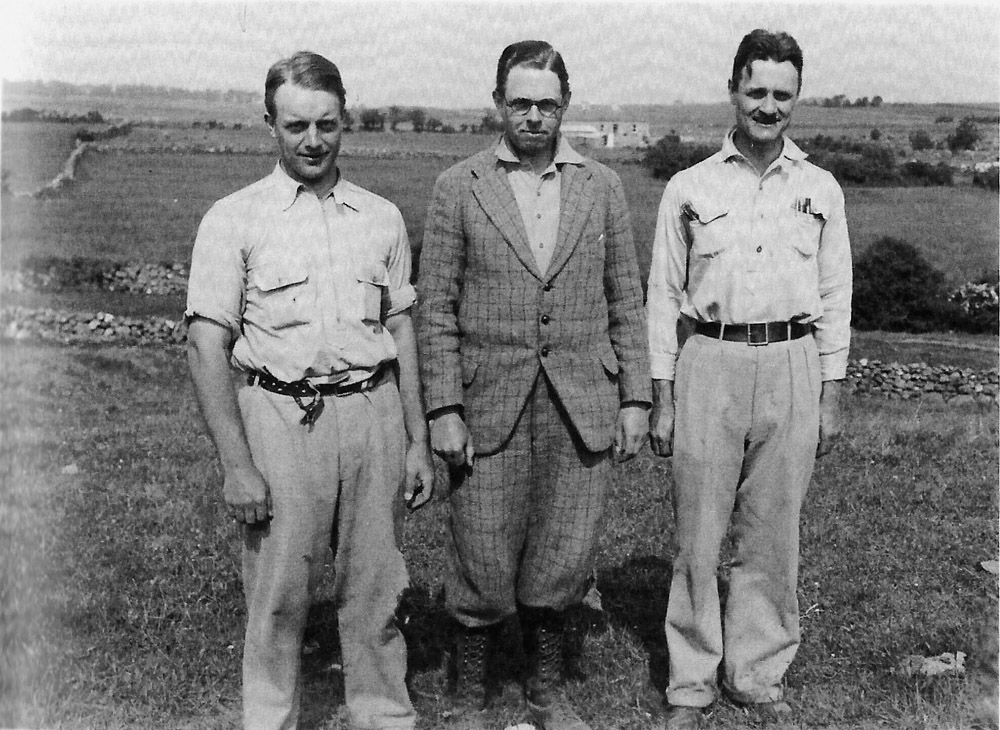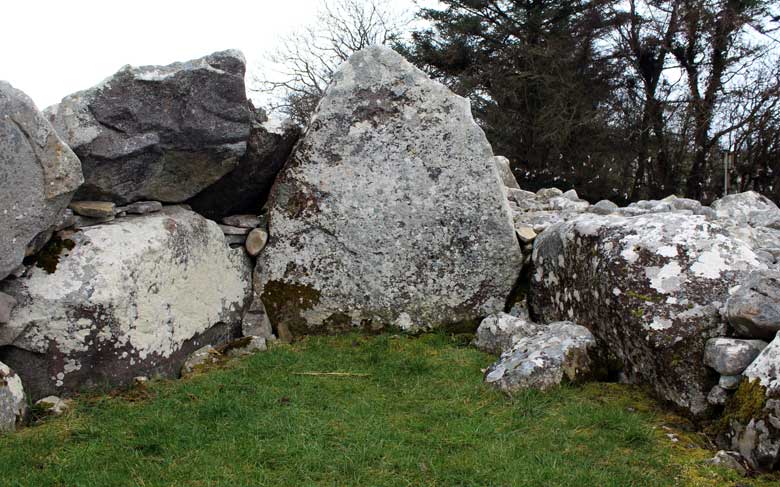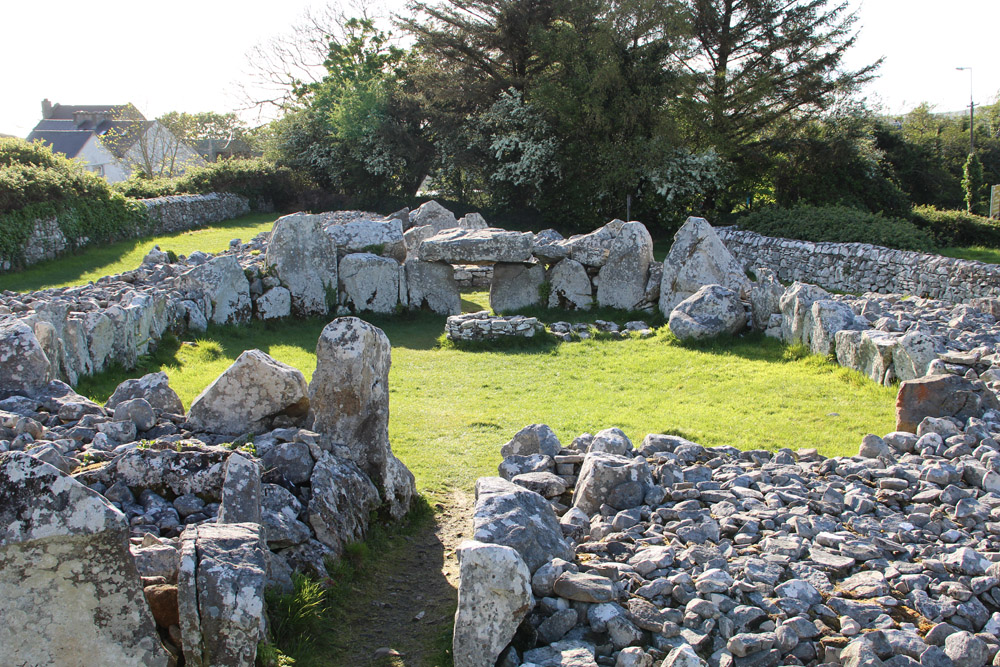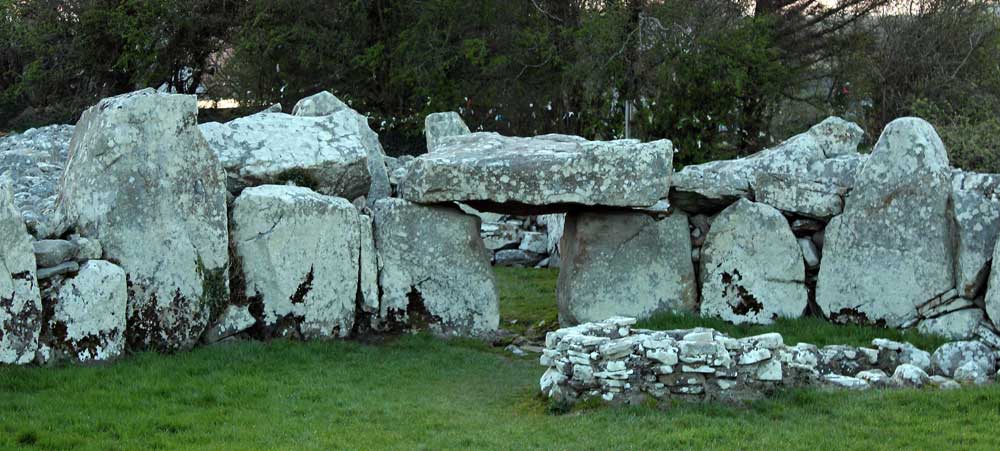Hugh O'Neill Hencken
Hugh O'Neill Hencken was born in New York City on January 8, 1902, the son of Albert Charles and Mary Creighton O'Neill Hencken. He spent his youth in Pennsylvania, and went to Princeton University in 1920. He graduated from Princeton with an A.B. in 1924 and went on to Cambridge University to receive a B.A. (1926), an M.A. (1929), and his PhD in archaeology in 1930.

Hencken received numerous honorary degrees from institutions that included Cambridge University and the National University of Ireland. He was appointed Associate in European Archaeology at Harvard University in 1930 and was made Assistant Curator of European Archaeology at the Peabody Museum the following year. He was Curator of the same department from 1933-1960, and also taught at London, Oxford, and Edinburgh universities during this period.
Hencken married Mary Thalassa Alfred Cruso on October 12, 1935. They had three daughters: Ala, Sophia, and Thalassa. His wife, who had a diploma in archaeology from London University, died June 11th, 1997.
From 1955-1960 Hencken served as the Director of Prehistoric Studies at the American School of Prehistoric Research. He was a Lecturer in Anthropology at Harvard University in 1943-44, 1948 and 1956.

Hencken conducted excavations and museum research on Iron Age peoples and objects in England, Ireland, Morocco, Algeria, Italy, Greece and elsewhere in Europe and North Africa. A member of professional and academic societies too numerous to mention, Hencken was also a prolific writer, publishing excavation reports, articles, and books on his work in Europe. He died in 1981.



Obituary
HUGH HENCKEN, 79; NOTED ARCHEOLOGIST AND MUSEUM CHIEF
by JOSEPH B. TREASTER, SEPT. 4, 1981
Hugh O'Neill Hencken, a leading American archeologist who specialized in the Iron Age in Europe, died Monday at a nursing home on Cape Cod. He was 79 years old.
For 40 years, until 1972, Dr. Hencken served as curator of European archeology at the Peabody Museum of Harvard University. From 1945 to 1972 he also served variously as director and chairman of the American School of Prehistoric Research, the research division of Peabody.
In later life he continued at the museum as the honorary curator, working in research and occasionally giving lectures at Harvard. He had homes in Boston and in Marion, Mass.

In the early part of his career Dr. Hencken conducted archeological digs in England and Ireland. In the late 1940's he directed digs in Algeria and Morocco and since about 1950 he concentrated on the analysis and synthesis of ancient materials in museums across Europe. Pre-World War I Collection For the last 15 years, Dr. Hencken had been studying a collection of antiquities discovered at sites in Germany and Central Europe before World War I. He had been instrumental in obtaining the artifacts, known as the Duchess of Mecklenburg Collection, for the Peabody. Dr. Hencken wrote three books on the collection and was working on a fourth. Altogether, he had written a dozen books. In perhaps his most ambitious dig, Dr. Hencken supervised a joint team of American and Irish archeologists, anthropologists and ethnologists in excavations in Ireland from 1932 to 1936.
One of their early finds, recovered from a clay mound near Moate in County Westmeath, was a large wooden building that Dr. Hencken and the others believed was a lake house constructed by the Celts, who traveled to Ireland from the continent in the Bronze Age.

Dr. Hencken was born in New York Jan. 8, 1902. He received a bachelor of arts degree from Princeton University in 1924 and a doctorate at Cambridge University, England, in 1929. He became the curator of European archeology at the Peabody in 1932.
Dr. Hencken served as president of the Archeological Institute of America from 1952 to 1955. In 1935, while excavating in Ireland, Dr. Hencken met Thalassa Cruso, of England, who had studied archeology under Sir Mortimer Wheeler, and later married her. She was his second wife; the first Hencken marriage ended in divorce.
Miss Cruso later became known to the public through her gardening show on National Educational Television, ''Making Things Grow.'' In addition to his wife, Dr. Hencken leaves three daughters, Ala Reid, Sophia Stone and Thalassa Walsh, and seven grandchildren. A private funeral was held yesterday.
Source: New York Times.


